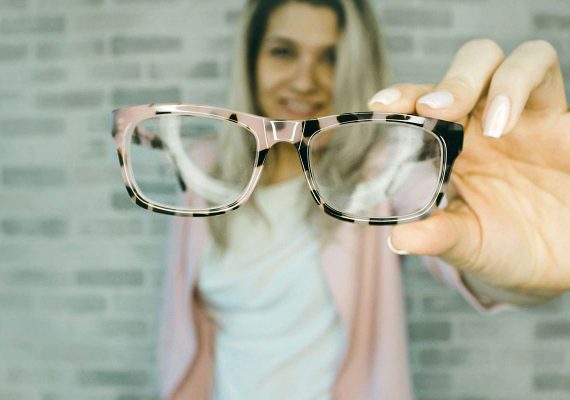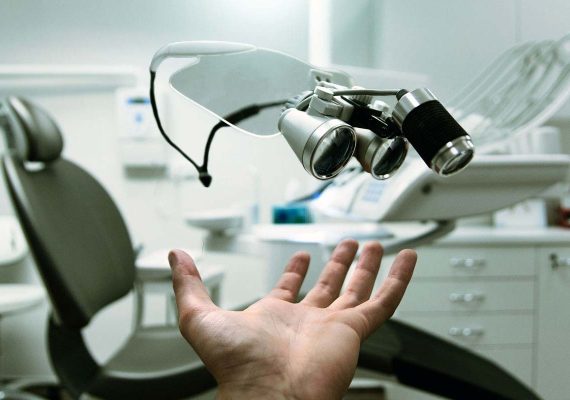LVA
Low Vision AIDS (LVA) Service in Delhi
Learn About Low Vision AIDS
- What Is ‘Low Vision’?
- What Are The Causes Of ‘Low Vision’?
- Visual Handicap May Be Produced By Various Kinds Of Visual Impairments
- What Are ‘Low Vision Aids’?
- Types Of Low Vision Aids
- Optical Low Vision Aids
- Non-Optical Low Vision Aids
- Illumination & Low Vision


What Is ‘Low Vision’?
A person is said to have ‘low vision’, if he or she has a significant visual handicap in spite of treatment and best correction with standard eyeglasses or contact lenses. ‘Low vision’ should not be confused with blindness.
People with ‘low vision’ have a significant visual handicap but they also have significant residual vision. The residual vision may be insufficient to meet the patient’s routine needs.
But a good percentage of these patients have some degree of usable vision, which can be utilized for their day to day work using special aids or devices. If properly motivated, these patients can potentially benefit with the use of special aids or devices called ‘Low Vision Aids‘
What Are The Causes Of ‘Low Vision’?
Although most often experienced by the elderly, people of any age may suffer from low vision. Low vision can result from birth defects, inherited diseases, injuries, diabetes, glaucoma, high myopia and aging.
The commonest cause is age related macular degeneration (ARMD), a degenerative disease of the retina, the innermost layer of the eye that perceives light and enables us to see. Macular degeneration affects the central vision. Even when advanced, it does not lead to total blindness because the peripheral vision is still preserved, even though the central vision may be totally lost.
Although reduced central vision is the commonest cause of low vision, extensive loss of peripheral vision as in advanced glaucoma, can also produce low vision due to extremely narrow field of vision. Birth defects or inherited disease producing loss of color vision or increased glare sensitivity (diminished ability of the eye to adjust to light, contrast or glare) can also cause low vision.
Visual Handicap May Be Produced By Various Kinds Of Visual Impairments
Reduced central vision produces difficulty in reading, watching television and recognizing faces. Loss of peripheral vision reduces mobility. Increased glare sensitivity causes difficulty in driving.
Impaired color vision results in difficulty in distinguishing different colors. Different types of low vision require rehabilitation with different kinds of ‘low vision aids’.
What Are ‘Low Vision Aids?’
A ‘Low Vision Aid’ (LVA) is a device or an apparatus that improves or enhances the residual vision in patients with low vision. There is no absolute level of vision above which LVAs will be useful, and below which they will not be.
Also there is no one device that is suitable for all situations and all patients. Different devices are needed to fulfil the needs of various patients. Various low vision aids may need to be tried out before the most suitable device or devices is determined for a particular patient.
Types Of Low Vision Aids
There are broadly two types of low vision aids: optical and non-optical.
Optical Low Vision Aids
Optical low vision aids use lenses, or a combination of lenses, to magnify the size of objects of regard at distance or near. The lowest magnification compatible with the task to be performed should be used by the patient. The main types of optical devices available are:
- Magnifying spectacles – they have stronger, high-powered lenses compared to the usual eye glasses and are designed for close work. Patients using them need to hold the reading material very close to their eyes in order to keep the print in focus.
One needs some practice to get used to these spectacles. They have the advantage of leaving both hands free to hold the reading material. The hands are also freed from holding a magnifying lens, an important consideration in old patients with shaky hands.
- Hand magnifiers – they are the most commonly used low vision devices. They offer greater flexibility because the patient can control their position in relation to the eye or the object of regard. Also, the reading material can be held at the normal distance. Some of them may have a self contained light source incorporated in them
- Stand magnifiers have the magnifying lens mounted on a stand that rests on the reading material.
- Sheet magnifiers – these are essentially plastic sheets with concentric ridges on their surface. These are available as small size pocket magnifiers or large size book readers. However they provide only low magnification
- Paperweight magnifiers – they rest directly on the print material, which they magnify.
- Bar magnifiers are useful for reading books or the telephone directory
- Telescopes – telescopes are aids to magnify distance objects. They may be hand held or mounted on spectacles. However they have the disadvantage of reducing the field of vision.
Non-Optical Low Vision AIDS
Dry eye syndrome is a leading cause of ocular discomfort affecting millions of people. Dry eye conditions are a spectrum of disorders with varied etiology ranging from mild eyestrain to very severe dry eyes with sight threatening complications.
Although the typical patient of dry eyes is elderly, or suffers from autoimmune disease, increasing numbers of patients do not fit this profile. Younger patients who work with computers can suffer from dry eyes more often than elderly patients.
Dry Eye
Dry eye condition is also aggravated in polluted conditions, dry weather, decreased ambient humidity as seen with air conditioning and indoor heaters. It may also result from the abnormalities in one or more of the tear film components, ocular or systemic diseases, and various drugs.
Dry eye syndrome is usually treated with tear supplements and lubricants. However, if these do not help, the insertion of microscopic plugs (temporary or permanent) can be inserted to help conserve tears and prevent them from draining away. In severe cases, surgical intervention may be essential.
Non-Optical Low Vision AIDS
These include: –
- Large Print Books And Magazines
- Large Playing Cards
- Large Dial Telephones
- Enlarging Photocopiers
- Talking Machines – Talking Watches, Talking Books, Talking Calculators, Talking Diaries & Talking Computers
- Closed Circuit Televisions – These can provide high magnification (up to 40 times) in an undistorted manner. The patient can get as close as he wishes to the monitor, which may be a small or a medium sized screen of a tv or a computer monitor. Contrary to popular belief, sitting close to the screen does not cause eye damage. Adjustable magnification and contrast make it easy to use.
Illumination & Low Vision
Illumination has an important role in helping patients with low vision. Even for a normal person with advancing age, increased illumination is needed to perform the same task. Lighting should be ample, placed close to the reading material and be properly directed towards it.
Illumination devices like high intensity reading lamps with adjustable arms are of good help.
Visors and cap brims block the dazzling effect of overhead light. Glare control filters incorporated in the spectacles can help control glare and improve function in many patients.
Services at Shreya Eye Centre
What services are available for patients with low vision at Shreya Eye Centre in Delhi?
At Shreya Eye Centre Delhi, a complete eye examination of patients with low vision is performed by eye specialists ophthalmologists (medical doctors educated and trained to provide eye care). Total eye care to these patients starts with diagnosing the cause of low vision.
Once the cause of low vision is determined, patients try out different low vision aids. According to the needs of the patient, the most suitable low vision device or devices are determined and then prescribed for him or her.
Low Vision Aids assist many patients in leading a comfortable and relatively normal life. With these devices and proper motivation, people with visual loss can often read, do modified close-up work, and continue to take good care of themselves.
Schedule Your Eye Care Appointment
Submitting your appointment request is the initial step towards personalized and timely eye care.
Our team will contact you within 24 hours to confirm your appointment. For immediate assistance, please call us directly.

